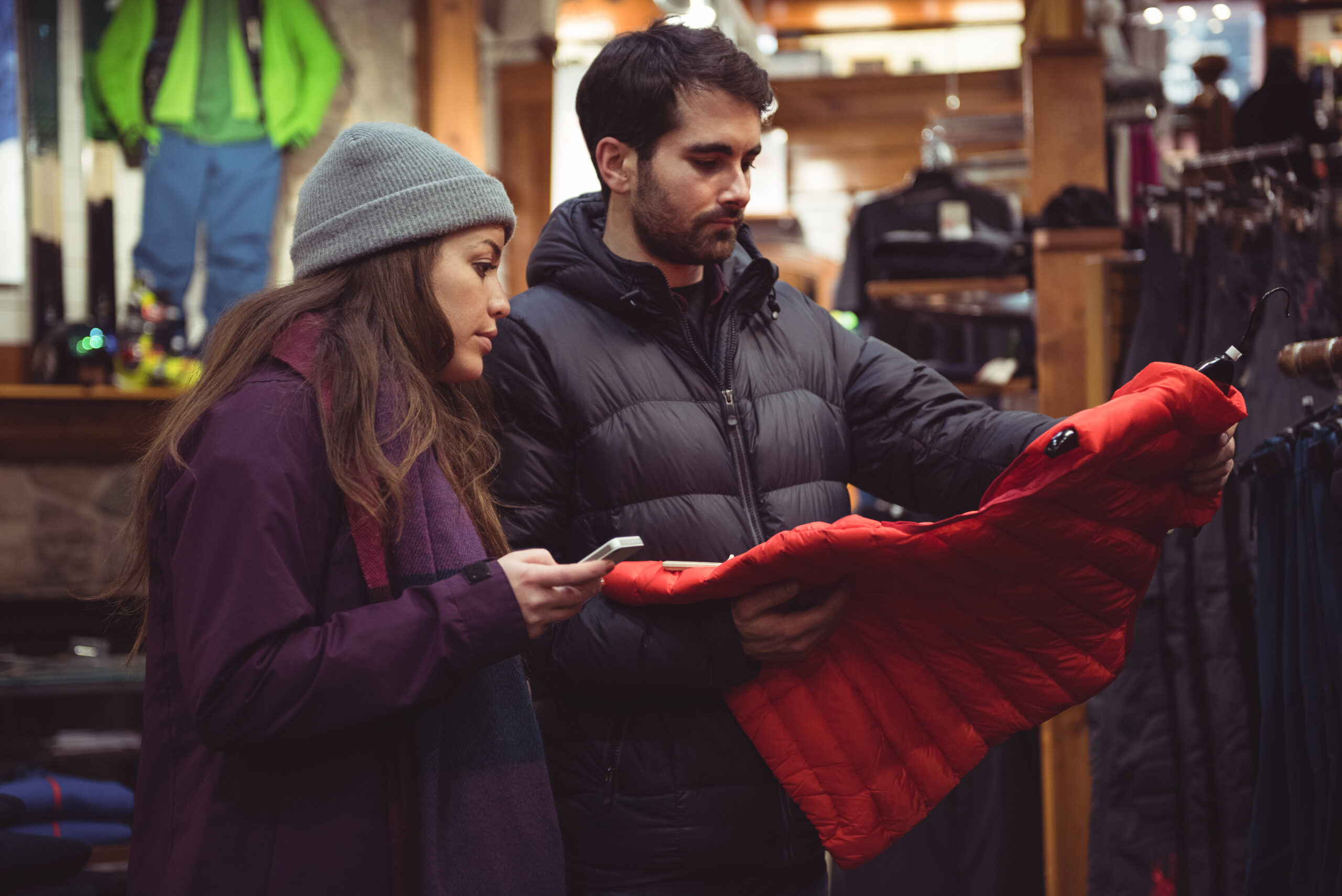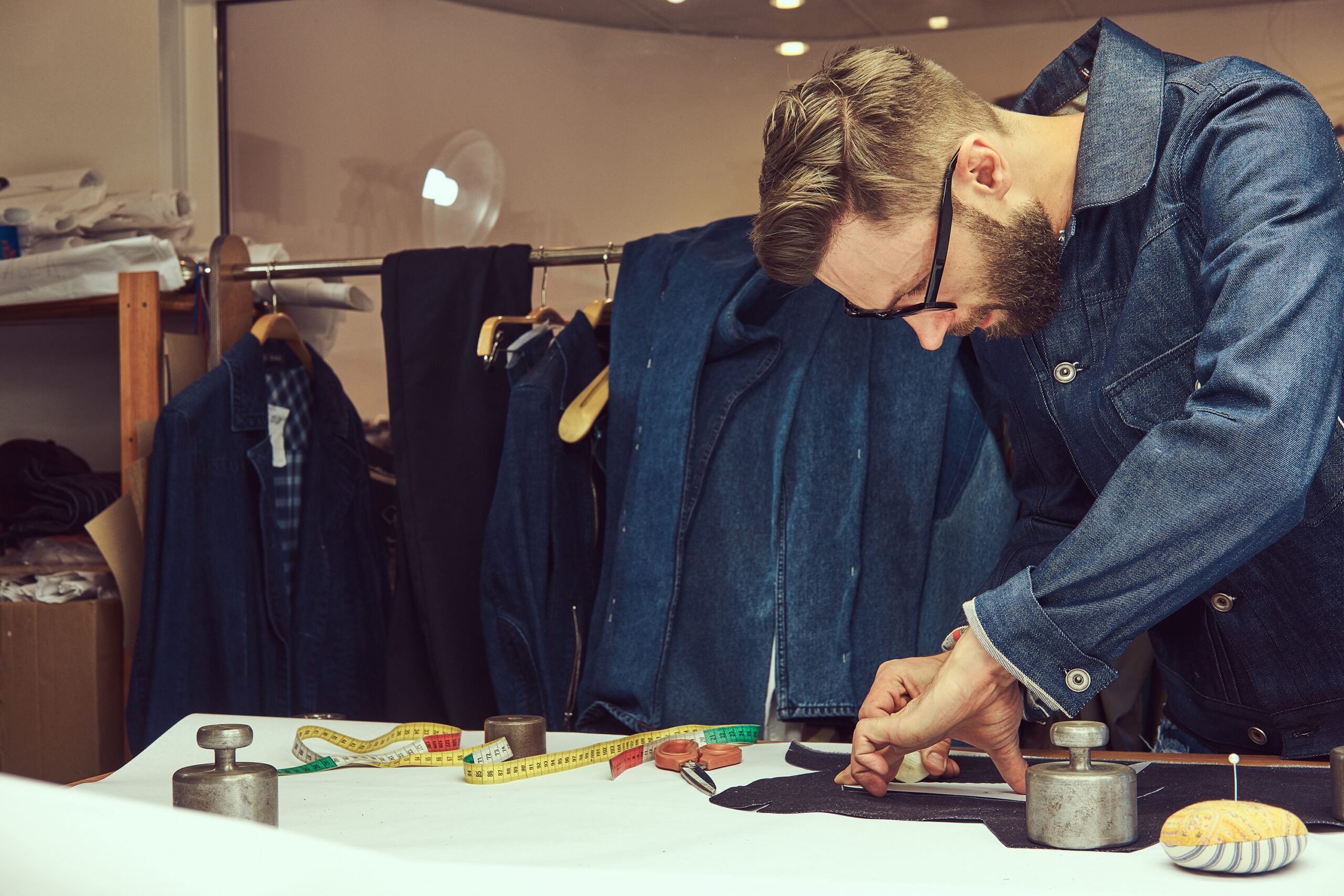Launching a clothing brand can feel exhilarating—a creative challenge filled with opportunities to bring your own style and vision to life. The landscape of fashion entrepreneurship has evolved rapidly: today’s independent apparel startups compete on quality, storytelling, and accountability, not just trendsetting designs. With a flood of new labels vying for attention, the brands that stand out are the ones that pair a distinctive identity with disciplined operations and component-level excellence. If you’re researching how to start a clothing brand, how to start a clothing line, or even what do you need to start your own clothing business, you’re already on the right path.
Most founders focus their energy on fabrics, marketing strategies, and visual brand elements. However, one vital detail often goes ignored: the hardware and components—especially zippers—that dictate performance, reliability, and perception once your garments leave the studio. A zipper is not just a fastener; it’s a litmus test of quality, durability, and attention to detail. Customers may forgive a questionable fabric choice once or twice, but they won’t forget a broken zipper or a jam that ruins a jacket’s first wear. That’s why brands that master components win repeat customers.
Enter LenZip, the expert U.S.-owned zipper manufacturer that supports both startups and established OEMs. Specializing in custom designs, small batch production, and rapid prototyping, LenZip delivers premium zippers made in the USA. With engineering support and flexible minimum orders, LenZip empowers brands to build better garments—one closure at a time.
Let’s explore every stage of building a clothing brand, showing how zipper quality and partnership with LenZip define your product line’s success from concept to launch.
Build Your Brand Identity
Before sketching your first design, spend time crafting a compelling brand identity. Successful clothing brands know exactly who they’re serving and what story they’re telling. Are you targeting sustainability-minded urbanites, performance-focused athletes, or luxury streetwear fans? Defining your audience lays the foundation for your product niche—and directly influences your hardware choices. This is where many “step by step how to start a clothing brand” guides stay surface-level. In reality, your component strategy should be embedded in the brand DNA you’re building.
Building a brand requires careful consideration of aesthetics: your garments’ silhouette, finishing details, and visual codes. But equally critical are technical decisions such as zipper types, finishes, and functions. Metal zippers are prized for their weight, shine, and luxurious presence on denim or leather goods. Coil zippers offer flexibility and minimal bulk, ideal for technical outerwear and performance wear. Molded plastic zippers excel in vibrant casual apparel and kids’ clothing where color and resilience matter. Even subtle differences in gauge, color, and pull design influence the overall aesthetic and perceived value of the garment.
Choosing hardware early in the design process streamlines development and avoids expensive manufacturing detours. Establish what zipper materials and features highlight your brand’s strengths. For a deep dive, explore Zipper Materials & Finishes and the Zipper Teeth & Sliders Guide to discover the full spectrum of American-made zipper options available for your product line. While you’re mapping your trims, align terminology with Zipper Terms You Should Know so your tech packs are crystal clear to suppliers and factories.
If your brand story highlights material choices—say, a preference for recycled polyester or rugged nylon—connect those choices to zipper tape and performance expectations. If you’re still learning the difference between nylon and polyester in apparel contexts, Unraveling the Differences: Nylon and Polyester is a helpful primer. A cohesive narrative—from fabric to zipper—signals maturity to buyers, investors, and customers who are evaluating whether you’re ready to deliver.

Sourcing and Manufacturing Partners
Quality apparel production starts with the right sourcing. Many new clothing brands rush to offshore manufacturing, drawn by low costs and high-volume promises. What founders often learn—sometimes painfully—is that inconsistent quality, long lead times, missed deadlines, and unexpected component substitutions can sabotage both product integrity and launch plans.
Partnering with U.S.-based suppliers and manufacturers—especially trusted names like LenZip—offers advantages that offshore factories can’t match. American zipper manufacturing stands for quality control, transparent communication, and ethical business practices. When you source components and trims domestically, you gain shorter lead times, reliable supply, and close collaboration throughout product development. That proximity helps when you’re refining the minute details that separate premium products from commodity items.
Transparency and accountability in the supply chain aren’t just “nice to have”—they’re what today’s consumers expect. Locally produced zippers and trims help tell a sustainability story, reinforce brand authenticity, and minimize environmental impact by reducing shipping and packaging needs. If you’re weighing suppliers, review LenZip vs YKK for insight into customization, service, and long-term reliability. For a broader overview on apparel factories, this guide to finding a clothing manufacturer provides useful context as you plan your vendor list and RFQs.
As you refine your business model, translate these learnings into your business plan clothing line section: component strategy, domestic vs. offshore trade-offs, MOQ assumptions, and contingency inventory plans. A robust sourcing strategy is the difference between “how to begin your own clothing line” and “how to run a clothing business” that scales.
Budgeting, Costing, and Pricing Strategy
Financial viability depends on honest costing. When you price a garment, don’t treat the zipper as a rounding error; treat it like a functional feature that customers interact with daily. A high-quality zipper may cost slightly more, but the reduction in returns, negative reviews, and warranty claims often outweighs the difference. Factor in component testing, color-matching, and branded pulls during development so your SRP can absorb those quality upgrades without eroding margin.
When you’re calculating BOMs and CMT, align your zipper gauge to both performance and cost. If you’re not sure where to start, the Zipper Gauge & Chain Size Chart is a practical resource for right-sizing zippers across categories—from lightweight tops to heavy outerwear. To cement your spec framework, skim Choosing the Right Zipper and Zipper Types Explained and make a decision tree that your design and production teams can follow consistently.
Key Steps to Start a Clothing Brand
- Define your target audience and carve a unique brand niche.
- Design signature pieces, selecting textiles and trims with hardware in mind.
- Partner with reliable U.S.-based suppliers for fabrics and components.
- Develop prototypes featuring your chosen zipper gauge, finish, and pull style.
- Source cut-to-length and custom zippers for precise sample integration using LenZip’s cut-to-length expertise.
- Refine prototypes via feedback and fit testing; align components for cost and quality.
- Plan production runs, incorporating quality control, scalable sourcing, and realistic lead times.
- Build your launch strategy highlighting craftsmanship, sustainability, and U.S.-made quality.
Sampling & Prototyping
So much of product development depends on the sampling stage. Your first samples are more than just prototypes—they represent your brand’s promise to buyers, retailers, and early fans. A strong prototype signals thoughtful design, attention to detail, and a commitment to quality that will translate into lasting market success. If you’re assembling a starting a clothing brand checklist, put zipper selection and sample-stage testing near the top.
Integrating premium zippers during sampling is critical. Many clothing startups underestimate how hardware affects the drape, function, and comfort of finished garments. Off-the-shelf, “close enough” zippers won’t work for custom pieces, and improperly sized hardware can ruin even the best design lines. LenZip’s cut-to-length zippers empower designers to experiment with exact sizing and finishes, eliminating the guesswork from fit integration during prototyping.
Custom-run zippers can be ordered in small batches to match each prototype, letting you test various gauges, slider functions, chain types, and colors until the perfect combination is found. This flexibility guarantees samples reflect your production plans, reducing costly delays and ensuring the finished products meet retail-quality standards. If you’re refining tape material for specific end uses, posts like Nylon vs. Polyester vs. Polypropylene — The Ultimate Webbing Showdown and Nylon vs. Polypropylene will sharpen your materials perspective as you finalize spec sheets.
High-quality samples build trust: with investors, partners, press, and customers. Each step—fabric selection, color approvals, slider configuration—should showcase your commitment to craft garments that last. Keep terminology tight with the Zipper Glossary so there’s no ambiguity between your team, trim suppliers, and factories.

Production, Testing & Quality Control
Designing a garment is only half the challenge. Once you move to production, quality control and component testing take center stage. Durable zippers aren’t just about reliability—they are vital to minimizing returns, warranty claims, and reputation damage. Weak hardware quickly exposes shortcuts in manufacturing, turning initial savings into long-term headaches.
LenZip sets industry benchmarks by testing every American-made zipper to rigorous ASTM, NFPA, and MIL-SPEC standards. Tensile strength, fatigue resistance, and corrosion testing help ensure each zipper will perform over the garment’s lifetime. These engineering standards give OEMs and startups alike confidence that products meet customer expectations for both utility and longevity. For a broader perspective on factory QA, this garment industry quality control guide outlines checkpoints that sync well with zipper verification.
Consider environmental exposure in your test plan. Technical outerwear that may encounter salt air, sweat, or detergent cycles should be paired with appropriate finishes. If you’re developing gear that faces rain or spray, reference your component strategy alongside Zipper Maintenance & Care to educate customers and reduce support tickets post-purchase. When you need to align finish options to color stories and segmentation, Zipper Materials & Finishes remains your central playbook.
Compliance, Fit, and Wear Testing
Before you green-light bulk, schedule controlled wear tests. Confirm that zipper length, insertion method, and top/bottom stops align with how the garment is used. For coveralls and uniforms, explore Custom Zippers for Coverall to ensure utility and durability under daily stress. When you sell through retailers, your returns policy and brand reputation will live or die on component reliability—give zippers the same respect as fabric and seam construction.
If your line spans multiple weight classes—from light mid-layers to heavy parkas—second-check gauge selections with the Zipper Gauge & Chain Size Chart so the feel and function match the customer’s expectations in each category.
Inventory, Forecasting, and Reorder Strategy
New brands often discover that demand forecasting is harder than design. Don’t let component shortages derail a successful launch. Align your zipper colorways and gauges with a coherent reorder plan. Because LenZip operates domestically, you can often reorder faster and tighten your safety-stock assumptions without inflating inventory risk. That agility is a competitive edge when trends shift or a hero product takes off sooner than expected.
Ecommerce Content, Merchandising, and CX
When you write product pages, highlight zipper quality as a feature, not fine print. Customers want to know why your jacket costs more than a fast-fashion alternative. Explain that you spec’d U.S.-made zippers from LenZip, color-matched to your palette, tested to ASTM/MIL-SPEC standards, and engineered for smooth operation over the garment’s lifespan. Add post-purchase care tips drawn from Zipper Maintenance & Care to reduce friction and reinforce durability in real-world use.
If your line includes travel or outdoor pieces, you can also point customers to education content—like zipper types and gauges—so they understand how your decisions translate to long-term value. Content that demystifies components decreases returns and increases satisfaction.
Common Mistakes New Clothing Brands Make
- Neglecting premium zipper selection and hardware specs during initial design.
- Relying on cheap offshore suppliers without reliable domestic support.
- Underestimating the time, cost, and complexity of prototyping and revisions.
- Failing to implement robust quality checks for components and finished garments.
- Overlooking flexible reorder options, gauge consistency, and color continuity.
Avoiding these pitfalls is essential for lasting success as you start an apparel company, open a clothing brand, and move from “how to start your own clothing line” to “how to scale a clothing business with healthy margins.”
Branding, Marketing & Product Launch
Your brand is more than graphics and posts—it is the sum of every garment, every touchpoint, and every promise delivered. Consumers and fashion insiders now scrutinize details closely; hardware choices like U.S.-made zippers have become a symbol of quality, transparency, and ethical manufacturing. Smart brands use their choice of American components as a marketing asset and trust signal, especially when they highlight sustainable sourcing and reduced freight emissions.
LenZip enables this storytelling through custom pulls, branded sliders, and small-batch runs. From high-performance zippers for technical outerwear to sleek trims for luxury garments, LenZip helps designers tell authentic stories about durability, American craftsmanship, and sustainable sourcing. If your garments live in demanding environments—think event tents or field gear—the same engineering ethos powers sectors like Tents & Enclosures and marine fabrication, reinforcing cross-category reliability.
Include U.S.-made zipper quality as an anchor in your sustainability narrative. Share behind-the-scenes details—American manufacturing, ASTM testing, and transparent materials. When your zipper glides smoothly season after season, your reputation grows with every zip. For tailored production or engineering advice, Request a Quote and explore the possibilities of partnering with industry-leading experts in zipper manufacturing.

Conclusion and Call to Action
Building a clothing brand from scratch takes vision, resilience, and the right partnerships. It’s attention to every detail—not just the logo and fabric, but hardware such as zippers—that distinguishes enduring brands from short-lived labels. Investing in superior closures transmits quality with every use, builds trust among customers, and lays the foundation for repeat sales and glowing reviews. For founders searching how to start your own clothing line, how to start clothing brand, or “tips for starting a clothing brand,” remember: the quiet details are what customers feel every day.
Whether your line is technical outerwear, independent streetwear, or elevated basics, LenZip stands as the U.S. zipper manufacturer committed to your success. With small batch runs, custom solutions, and American-made reliability, LenZip empowers startups and established brands to lead with products engineered for excellence.
Ready to launch your own clothing line defined by craftsmanship and trusted hardware? Request a Quote today and discover how LenZip can bring your fashion vision to life—from initial prototype to retail-ready garments customers love to wear.
Learn more about sustainable apparel manufacturing, zipper innovation, and hardware performance in the LenZip Resource Center.
Frequently Asked Questions
What are the first steps to start a clothing brand?
Start by defining your ideal customer segment and core design concept. Next, focus on sourcing high-quality fabrics, trims, and hardware—especially zippers. Partnerships with U.S.-based suppliers such as LenZip ensure you build your line with reliable, consistent materials from the outset, which is essential for a practical “starting a clothing brand checklist.”
How do I choose the right zipper supplier?
Seek a supplier offering customization, engineering support, and responsive service. LenZip provides these advantages, specializing in flexible minimums, fast prototyping, and American-made quality. Compare domestic precision and support with global brands in LenZip vs YKK.
Why do U.S.-made zippers cost more?
American-made zippers generally involve higher-grade materials, precision manufacturing, and rigorous quality testing. While costs may be higher upfront, these zippers offer superior performance and longevity, reducing returns and long-term expenses. LenZip utilizes ASTM, NFPA, and MIL-SPEC testing in every production run.
What zipper materials are best for apparel?
It depends on your designs. Metal zippers suit denim, outerwear, and fashion-forward pieces. Coil zippers are ideal for technical and athletic apparel, offering flexibility and lightweight strength. Molded plastic zippers deliver durability for everyday wear and casual styles. Explore specifications at Zipper Materials & Finishes and align with Zipper Types Explained.
Can LenZip handle small custom orders for new brands?
Yes—LenZip excels at supporting emerging designers and small brands, offering fast prototyping, minimal order requirements, and engineering support. Domestic production helps ensure consistent quality, responsive customization, and reliable delivery.
